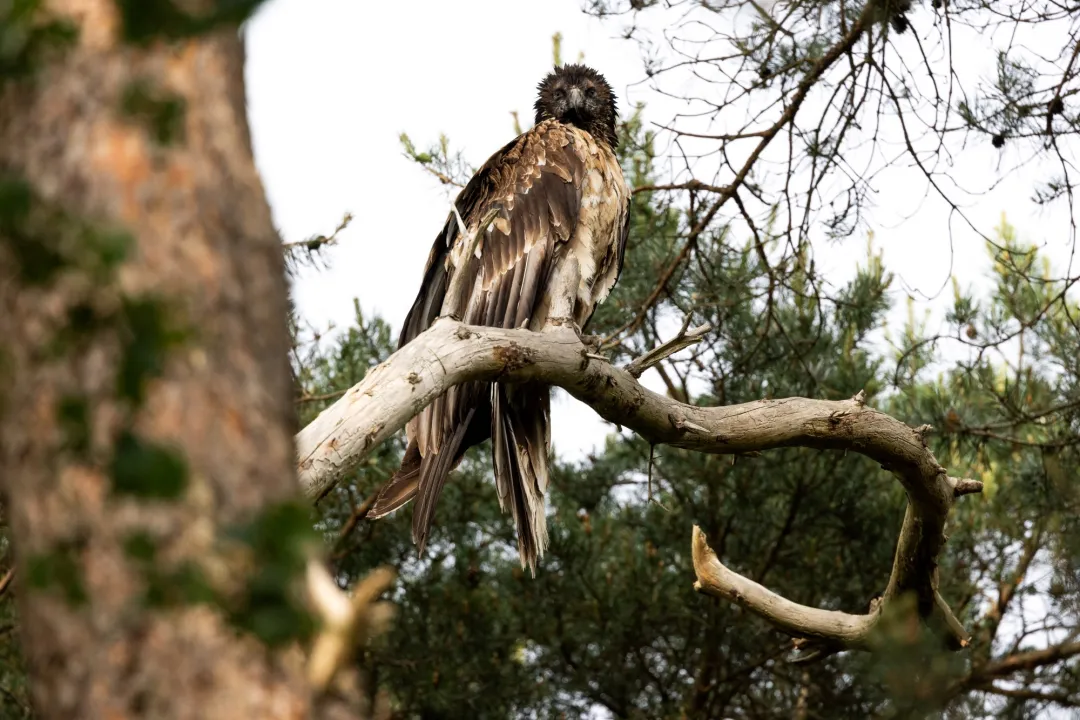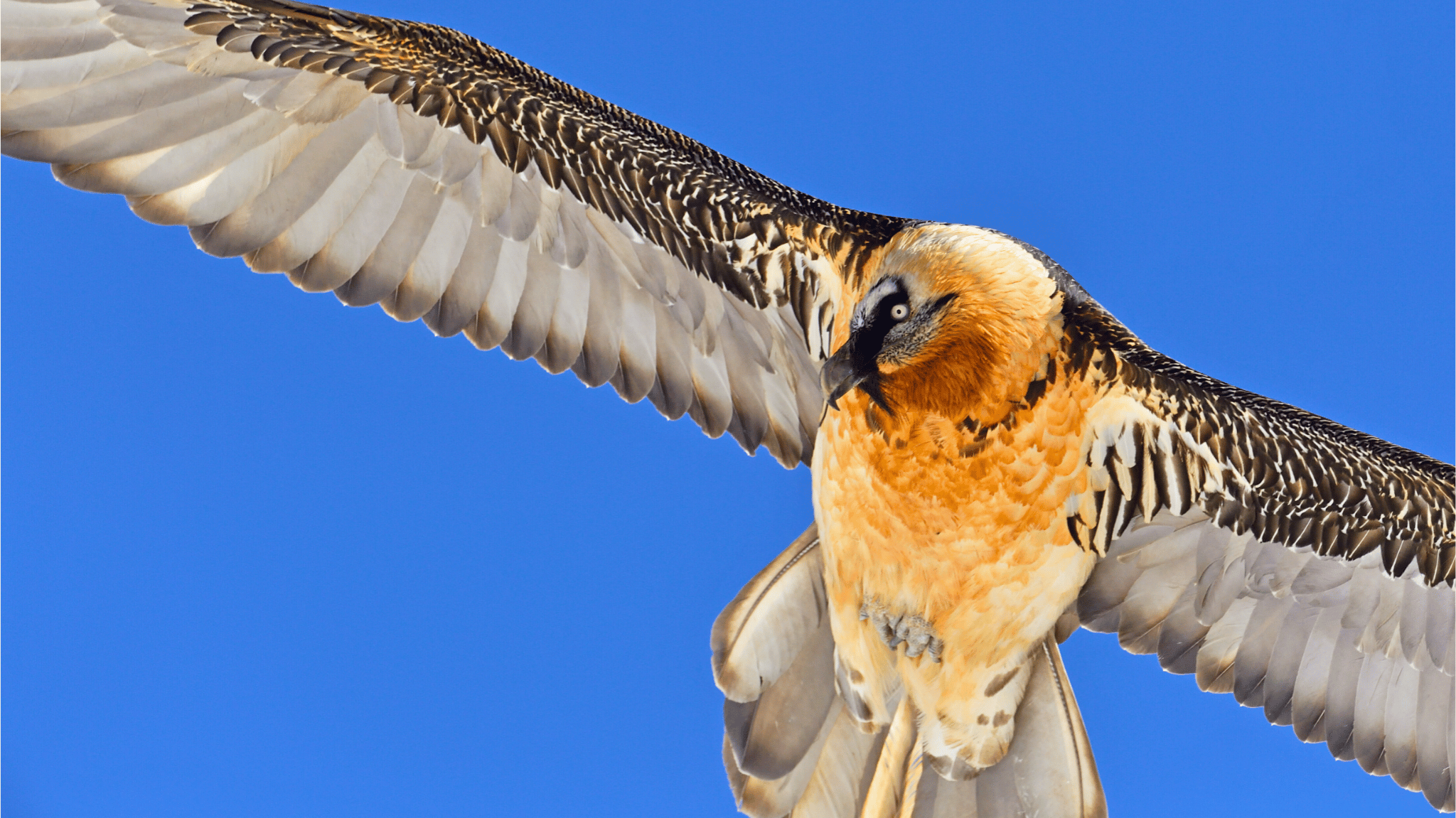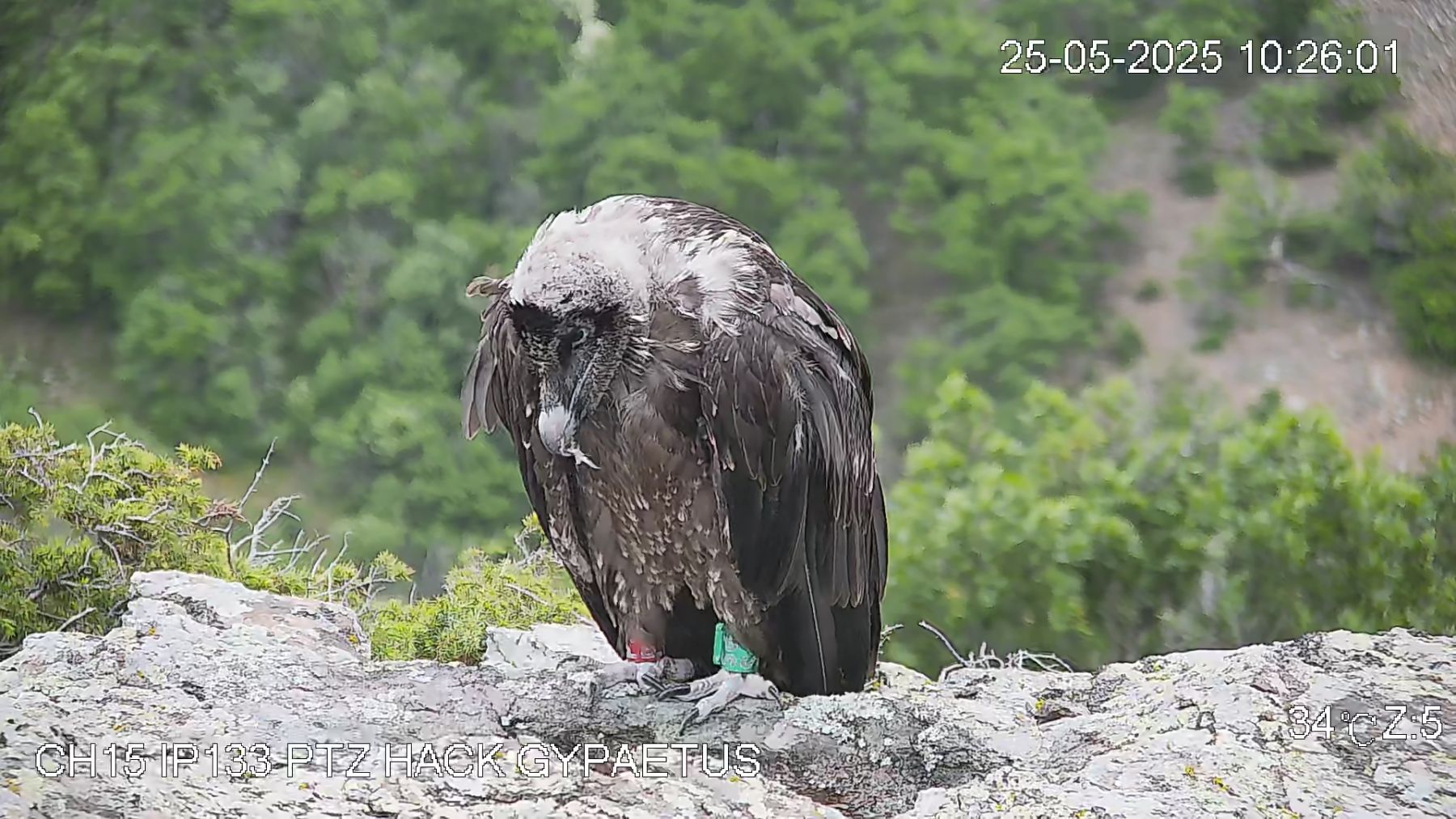
The rarest of Europe’s vultures, the bearded vulture, was once found across the mountains of southern Europe. Today it flies only in the Alps, in the Pyrenees, in Andalusia, and in isolated populations in Crete and Corsica. One of our vulture conservation projects, LIFE GYPCONNECT, aims to connect the populations in the Alps and the Pyrenees, helping to restore the species’ former range.
Bearded vultures in Europe
Two hundred years ago, bearded vultures were found in all the mountains of southern Europe, from Western Spain to the Balkans. However, due to a decrease in wild herbivores such as ibex and chamois, changes in farming practices and direct persecution by people based on unfounded beliefs that they predated on livestock, the population of the species crashed and by the beginning of the 20th Century had disappeared throughout most of its former range.

Bearded vultures in the Alps
The persecution of the species was particularly acute in the Alps with bounties offered for the killing of bearded vultures leading to the last individual to be shot in 1913 in the Aosta valley in Italy (see photo below).

in the late 1970s the basis of an Alpine Reintroduction based on the release of captive-bred individuals started to take shape. Working with partners across Europe a captive-breeding network was established – one that we still coordinate – and the first bearded vultures were released into the wild in 1986. Eleven years later the first recorded breeding in the Alps since the early 20th Century was recorded. Today there are around 50 breeding pairs in the Alps, around 100 pairs in the Pyrenees, 2 breeding pairs in Andalusia (also reintroduced) and small populations on Corsica and Crete.
LIFE GYPCONNECT
With the numbers of bearded vultures increasing in the Alps we started to plan the end of the reintroduction project there – the alpine population though is still genetically less variable than what you could expect from a population that size, so in order to improve the genetic diversity we started to invest in a reintroduction project that would link the populations of the Alps and the Pyrenees mountain ranges. Launched in 2015 and led by France’s Ligue pour la Protection des Oiseaux (LPO), we’ve been working to carry out conservation actions to connect the two population with LIFE GYPCONNECT.

With funding from the European Union’s LIFE+ programme and the MAVA Foundation, the project aims to promote the movements between the Alpine and the Pyrenean populations by reintroducing the species into the mountains of the Pre-Alps (Drôme region – Baronnies and Vercors) and Massif Central (Lozère, Aveyron, Gard, Hérault regions), using these mounatins as a corridor to connect the Alps and the Pyrenees.

Reintroducing bearded vultures
The LIFE GYPCONNECT project builds on our decades of experience breeding, releasing and reintroducing bearded vultures into the wild. Over the course of the six year project captive-bred birds from the Bearded Vulture Captive Breeding Network are being released in the national parks of Grands Causses, Baronnies and Vercors.

Since the first bird was released the release days have become a fixture in the local calendar celebrating the return of these birds. In 2018 we released 3 birds as part of the reintroduction project, all in the Baronnies. In 2017 8 birds were released in the Grands Causses, Baronnies and Vercors (see below).
Releasing the captive-bred birds involves a technique called hacking that has been successfully used for decades. The technique involves placing a bearded vulture chick in an artificial nest in a wild site, the chick is fed and monitored, without human contact, until the young bird has fledged and leaves the release site.

Improving food availability
To encourage the movements of birds between the two populations and the reintroduced populations the LIFEGYPCONNECT project is improving the access to food resources in Aude region that includes the eastern foothills of the Pyrenees, the Corbières mountain range and the Montagne Noire in the south of the Massif Central. The project team are setting up networks of feeding stations to improve the availability of food to support birds as they travel between the two mountain ranges.
Tackling threats
All populations of bearded vultures face threats that could hamper their return to their former range. The LIFE GYPCONNECT project is tackling those threats and carrying out actions to protect vultures. This involves insulating electricity power lines to prevent deaths from electrocution, working with local agencies to map the most sensitive areas for the population to inform the development sites of wind farms helping to avoid death by collision with turbines, rescuing distressed birds and tackling the illegal use of poison that can devastate the reintroduction efforts like the one poisoning event we saw earlier this year.

For more information about the project follow #LIFEGYPCONNECT on Twitter or Facebook and keep an eye on our website as we regularly publish news from the project.




